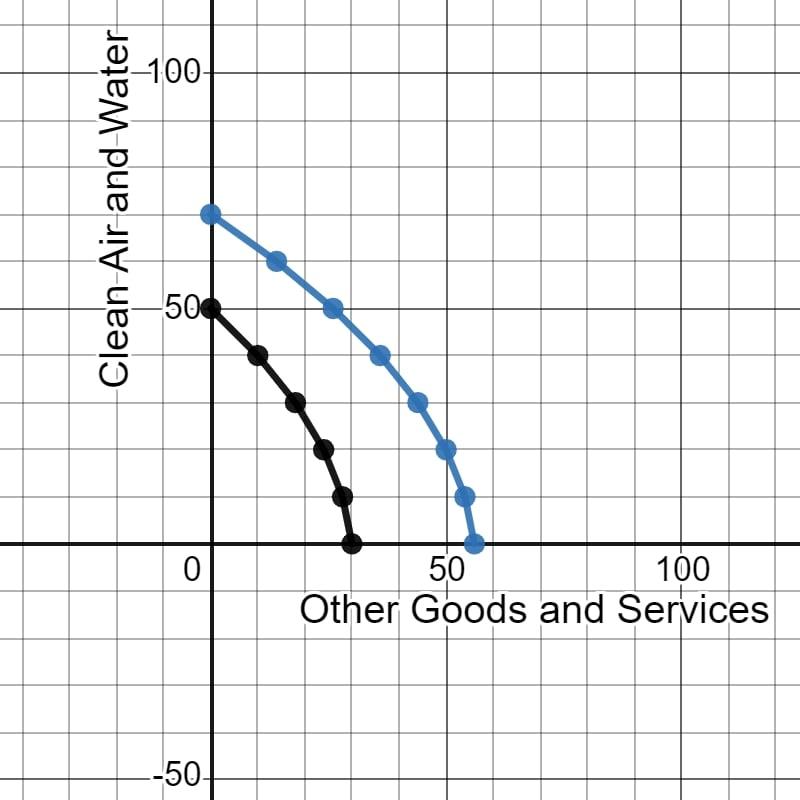Production Possibility Frontier graphs are widely used both in macroeconomics and microeconomics. For the first case, the graph might show the level of efficiency in the production of several goods for a nation, for the second—is for a company (Krylovskiy). In the paper, a graph that reflects the hypothetical PPF of a wealthy and developing country is presented, as well as conclusions about the economies of such countries. In Figure 1, the black curve serves for a developing country’s (China) output; the blue curve is for a wealthy country’s (Indonesia) output.

The changes in the production of certain goods in services undoubtedly result in changes in other economic sectors. In the graph, the trade-offs of equal clean air and water increases in the wealthy and developing countries affect the production rate of other goods and services. For example, if a developing country increases the quality of air and water to 30, they can only produce 20 goods and services. In turn, if the same increase occurs in the wealthy country, its production of other goods and services would be about 40. Therefore, the wealthy country might enhance air and water quality with lesser impacts on its trade.
The trade and specialization have both significantly influenced production expansion. Namely, trade allows people to devote their efforts to producing more goods than they can consume and, finally, specialize their skills. In turn, specialization involves enhancing skills, which expands production since more goods are of high quality. The rule can be applied universally since the global economy demonstrates the uniformity of applying such a tendency.
Finally, the question about the environmental quality treaty requirements for different countries arises. Apparently, more significant reduction targets are expected from wealthy countries. The reason for that lies in the rate of production, which is higher in the rich countries. Therefore, they can harm the environment on a grander scale; the low quality of air and water would not significantly change their economy. Yet, it is not so costly for them to increase the quality of the environment in comparison with developing countries.
Work Cited
Krylovskiy, Nikolay. “Production Possibility Frontiers.” Economics Online, 2020, Web.